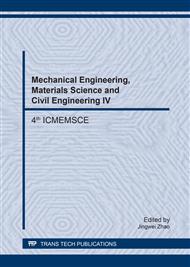p.245
p.252
p.257
p.262
p.267
p.272
p.276
p.281
p.289
Numerical Simulation and Experimental Research on Forging of Cylinder Bottom
Abstract:
In this work, a new forging process is proposed for bottom instead of the original casting process. In order to achieve better technological parameters combination, the finite element method (FEM) and orthogonal experiment were utilized to research the process of cylinder bottom forging. Forming maximum load, mould maximum wear and forging maximum damage were chosen as evaluating indicators. Billet preheating temperature, the mold preheating temperature, forging speed and friction factor were taken into consideration to analysis the influence on forming quality for the bottom. The significant factors and the optimal value, i.e. Billet preheating temperature (1150°C),the mold preheating temperature (350°C),the forging speed (50mm/s) and the friction factor (0.2) were determined. After the technological experiment, the qualified quality cylinder bottom can be manufactured by the optimized forging process.
Info:
Periodical:
Pages:
267-271
Citation:
Online since:
March 2017
Authors:
Price:
Сopyright:
© 2017 Trans Tech Publications Ltd. All Rights Reserved
Share:
Citation:


